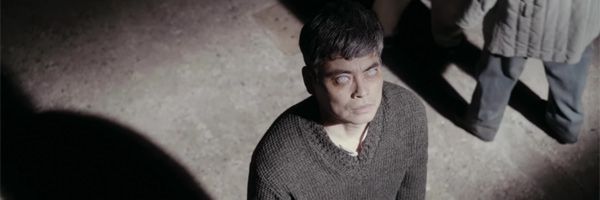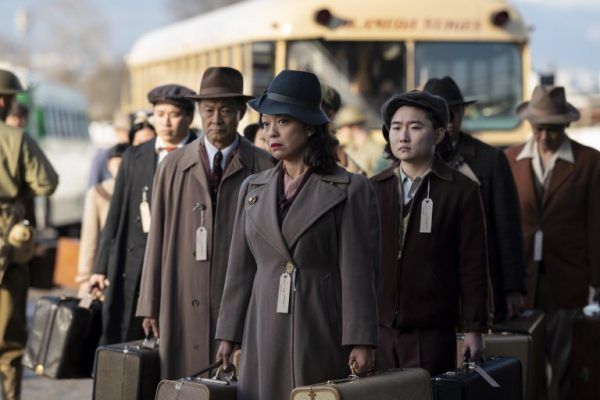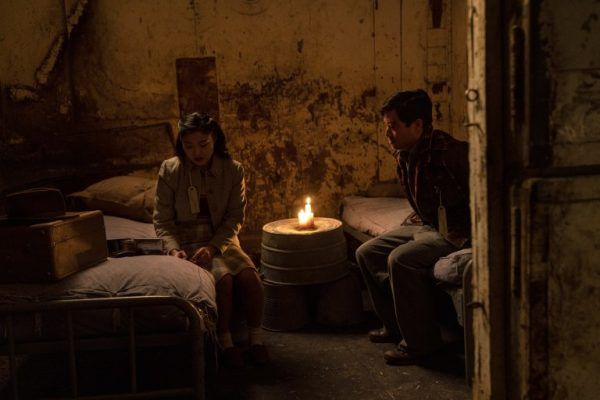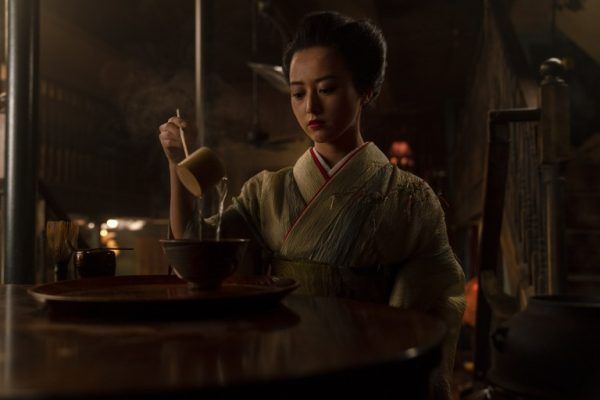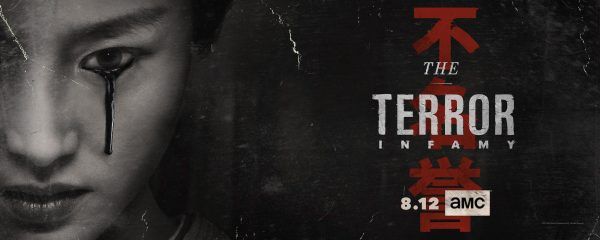Based on Dan Simmons' celebrated novel of the same name, AMC's The Terror never seemed ideal for a second season. The book has no sequels, and the tale leaves most of its characters dead, broken, or lost; but with a horror hit on their hands, AMC wisely dug into the core tenets of the series -- the ripe meeting ground between history and horror, humanity and monsters -- to build the title into an anthology series.
The second installment takes place in California during World War II, where we witness the Nakayama family’s devastation after the tragedy at Pearl Harbor brings xenophobic hysteria to the boiling point. At the head of the family is Henry (Shingo Usami), a fisherman and patriot whose proud of the life he built for himself and his family on Terminal Island, California. Henry and his wife Asako (Naoko Mori) raised a full-blown American citizen in their son Chester (Derek Mio); a college-educated photographer who’s in love with his Mexican-American coed, Luz (Christina Rodlo) has no problem talking back to the drunken white bully in town that’s taking advantage of his father. “No one thinks like that anymore,” he tells his father with a confident smile.
Then the unthinkable happens. Japan bombs Pearl Harbor, Franklin D. Roosevelt unleashes Executive Order 9066, and the Nakayamas and their neighbors are rounded up and sent to internment camps with shocking ease. Of course, this is the terror, which means humanity isn’t the only evil afoot. Where Season 1 laced the horrors of a naval expedition gone wrong with the horrors of a giant man-eating ice-bear, Infamy blends the real-life horrors of internment into an old-fashioned Kaidan tale. The Nakayama family isn't just faced with the horrors of internment, they're followed by a shape-shifting spirit known as an Obake that strikes at the captive Japanese Americans and the indifferent American soldiers guarding them, without prejudice.
Infamy is horrifying for the unflinching look it takes at systemic oppression and government-backed human rights violations, but it is rarely scary. The evils of internment ring out loud and clear. Designed as a timely tale of terror and designed from first-hand experience in Japanese American internment camps (co-star and producer George Takei invoked his traumatic childhood experience in the camps to make sure they got it right,) and perhaps most shocking and horrific of all is the realization that this infamous black spot on American history pales to the inhumane conditions we're witnessing on the nightly news today. That's more than enough for a mini-series to mine, and the production value remains first-rate, but Infamy is determined to also deal in the supernatural, and that doesn't fare as well.
On one hand, the ghosts and ghouls are an instant access point for audiences into the period piece action -- something spooky and thrilling for viewers to hold onto during moments of demanding character drama. But because Infamy is so timely, the paranormal ends up feeling like more of a distraction than a lifeline. 1942 may be a near-unrecognizable past in many ways, but it's the horrors of the time that are more alive than ever, and when we turn away from them to look at a ghost, the ghost just doesn't seem as scary. And despite the fact that Infamy hinges on the mythology of the yūrei, the same type of pale, stringy-haired ghost that gave us the J-Horror movement, the scares themselves rarely land with the same impact of the real-life horrors they're interrupting, lacking the punch of dread and stylistic flourish that made Japanese ghost stories such a dominant force in horror during the early aughts.
Though the ghost story may not measure up to Tuunbaq's visceral potency in S1, Infamy doesn't miss when it swings at the heart of the human horrors. The title refers not only to Roosevelt's iconic speech but to the dark spot on American history that too many of us were too comfortable looking away from until the tides of our current climate brought it right back in our faces. The Terror: Infamy demands that you look, demands that you see and understand, and it even gives you a pretty good ghost story to make sure you're paying attention. It's a well-crafted, beautifully made season, and while the scares themselves may not measure up to the stunning genre work in Season 1, Infamy firmly establishes The Terror as a worthy anthology rooted in the terrors of the human condition, capable of evolving into as many horrors as the human mind can hold.
Rating: ★★★

